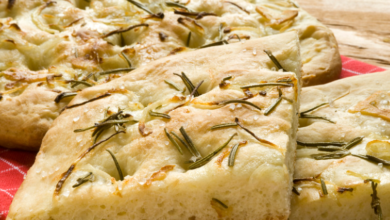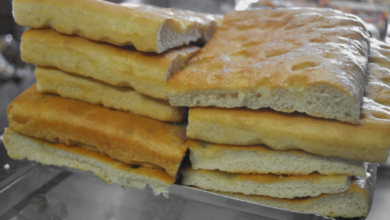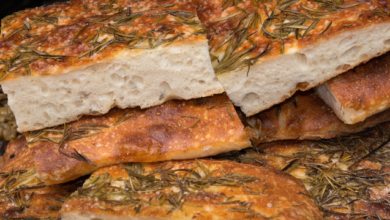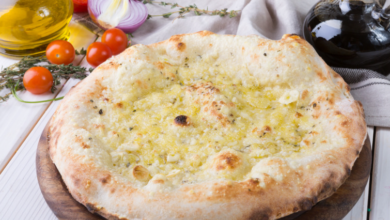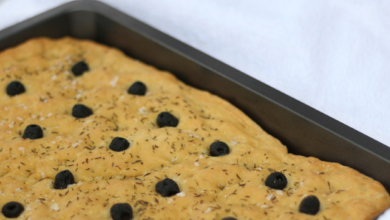Why Is My Focaccia So Hard? Here’s Why!

What To Know
- Proof the dough in a warm place (around 75-80°F) for 1-2 hours, or until doubled in size.
- Inadequate hydration makes the dough difficult to work with and results in a hard and crumbly focaccia.
- Baking focaccia at a temperature that is too low will not create a crispy crust and may result in a soggy interior.
Focaccia, the beloved Italian flatbread, is renowned for its soft and pillowy interior and crispy, golden-brown crust. However, achieving this perfect balance can be a culinary puzzle, and many home bakers have encountered the frustration of hard and unyielding focaccia. If you find yourself wondering “why is my focaccia hard,” here’s a comprehensive guide to diagnose and rectify the issue.
The Critical Factors: A Baker’s Checklist
Understanding the factors that contribute to focaccia texture is crucial for troubleshooting. Here are the key elements to consider:
Hydration: The Key to Softness
Focaccia dough requires ample hydration to achieve its signature softness. The ideal dough hydration level for focaccia is around 75-80%. This means that for every 500 grams of flour, you should add approximately 375-400 grams of water.
Kneading: Developing Gluten’s Elasticity
Kneading is essential for developing the dough’s gluten network, which provides structure and elasticity. Hand-kneading for 10-15 minutes or using a stand mixer on low speed with the dough hook attachment for 5-7 minutes will suffice.
Proofing: Allowing Yeast to Work Its Magic
Proofing, or allowing the dough to rise, is crucial for the yeast to ferment and produce carbon dioxide gas. This gas creates the airy texture and characteristic holes in focaccia. Proof the dough in a warm place (around 75-80°F) for 1-2 hours, or until doubled in size.
Baking: Achieving the Perfect Crust
Baking focaccia at a high temperature (450-500°F) creates a crispy crust while keeping the interior soft. Use a baking stone or a preheated oven-safe skillet to ensure even heat distribution.
Troubleshooting: Identifying the Culprits
Over-kneading: A Common Pitfall
Excessive kneading can overdevelop the gluten network, resulting in a tough and chewy focaccia. Knead the dough just until it becomes smooth and elastic, avoiding overworking it.
Under-proofing: A Recipe for Density
Insufficient proofing prevents the yeast from fully fermenting, resulting in a dense and undercooked focaccia. Allow the dough to rise until it doubles in size before baking.
Low Hydration: A Path to Hardness
Inadequate hydration makes the dough difficult to work with and results in a hard and crumbly focaccia. Ensure you add enough water to achieve the desired dough hydration level.
Incorrect Baking Temperature: A Crucial Balance
Baking focaccia at a temperature that is too low will not create a crispy crust and may result in a soggy interior. Conversely, baking at too high a temperature can burn the crust before the interior is fully cooked.
Additional Tips for Focaccia Perfection
Use High-Quality Ingredients
The quality of your ingredients directly impacts the final product. Use bread flour for its higher protein content, which provides more structure. Fresh yeast or active dry yeast will ensure optimal fermentation.
Salt for Flavor and Texture
Salt enhances focaccia flavor and strengthens the gluten network, contributing to a more elastic dough. Add salt to the dough in the early stages of mixing.
Dimpling: Creating Air Pockets
Before baking, dimple the focaccia surface with your fingers to create air pockets. This will help distribute the olive oil and ensure an even bake.
Olive Oil: A Flavorful Enhancement
Drizzle generous amounts of olive oil over the focaccia before baking. This will create a flavorful crust and prevent the dough from drying out.
The Final Verdict: Soft, Pillowy Focaccia Mastery
By understanding the critical factors and troubleshooting potential issues, you can achieve soft and pillowy focaccia every time. Remember, patience and attention to detail are key in this culinary art. Experiment with different dough hydration levels and baking techniques to find what works best for you. With practice, you’ll master the perfect balance and create focaccia that will delight your taste buds and impress your loved ones.
Information You Need to Know
Why is my focaccia so dense?
Under-proofing or inadequate kneading can lead to a dense focaccia. Ensure you proof the dough until doubled in size and knead it until it becomes smooth and elastic.
How can I prevent my focaccia from burning?
Baking at too high a temperature can cause the focaccia to burn. Use an oven thermometer to ensure your oven is at the correct temperature. You can also cover the focaccia with foil during the last 10-15 minutes of baking to prevent over-browning.
What can I do if my focaccia is too dry?
Inadequate hydration or over-baking can result in a dry focaccia. Ensure you use enough water to achieve the desired dough hydration level and avoid baking the focaccia for too long.

